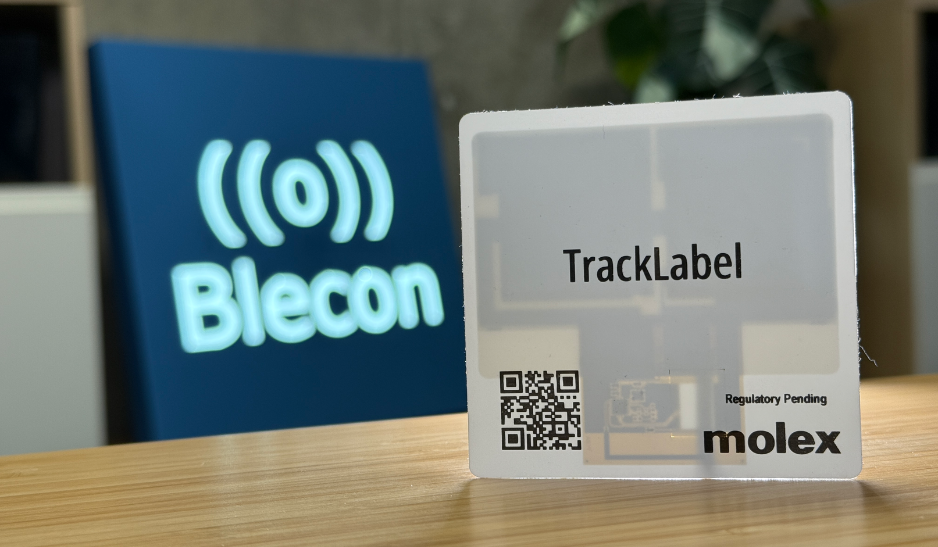4 min read
Bluetooth Beacons Explained: Devices, Networks & Applications
 Maya Ahluwalia
Sep 30, 2025 10:47:27 AM
Maya Ahluwalia
Sep 30, 2025 10:47:27 AM
Bluetooth Beacons are Back!
Bluetooth Beacons have been a part of the IoT landscape for over a decade, but the factors driving adoption today look very different from the early app-driven use cases. What has changed is the scale, sophistication and economics shaping the next phase of deployment.
Enterprises need more reliable visibility of their operations, not just to improve efficiency but to satisfy regulators, insurers and customers. Beacons deliver this observability in ways that GPS, RFID or cellular trackers often cannot match for cost, efficiency or scale. Advances in low-power components and flexible batteries have introduced new form factors, from rugged tags to wearables and disposable Smart Labels, extending Beacon coverage from critical assets all the way down to individual items.
At the same time, Beacons have evolved from static identifiers into smart devices with secure identities, encrypted communication and the ability to synchronise data reliably with enterprise systems. And instead of relying on consumer apps, organisations are now building their own Bluetooth Beacon Networks that give them control over coverage, security and integration with the cloud.
These shifts explain why Beacon technology has moved from “useful” to “essential,” and why it is becoming a core building block in enterprise connectivity strategies.
What Are Bluetooth Beacons?
A common question is what is a Bluetooth Beacon and how do Bluetooth Beacons work. The simplest answer is that a Beacon is a wireless device that transmits low-power signals using Bluetooth Low Energy (LE). Nearby devices, whether smartphones, scanners, gateways or laptops, can detect those signals and pass them on. But the real value of Beacon technology lies in how it combines devices, networks and applications.
The device is the hardware transmitter. The Network is the coverage layer, built from a mix of fixed gateways and mobile devices such as phones, tablets and scanners. Together, these act as Hotspots that collect Beacon data and forward it to the cloud. And the Application is the enterprise system that consumes and uses the data, whether that's an EHR system tracking medical assets, a cloud analytics pipeline optimising supply chains or an AI model learning from continuous real-world signals. Only when all three work together do Bluetooth Beacons create business value.
Beacon Devices and Form Factors
Beacon devices have become remarkably versatile. Anchors provide stable reference points in factories, warehouses and hospitals. Tags are attached to moving assets such as tools, roll cages or medical equipment. Wearables in the form of lanyards or wristbands are increasingly used for staff safety and patient monitoring. Smart Labels, thin, disposable Beacons, bring item-level tracking to logistics and retail, extending visibility down to individual packages. And in many cases, Bluetooth Beacon functionality is embedded directly into products themselves, from industrial machines to consumer electronics.
This diversity of form factors shows why Beacons are being adopted across so many industries. The underlying technology is the same, but how it is packaged determines where and how it can be deployed.

Beacon Formats: From iBeacon to Smart Beacons
Much of the history of Beacon technology has been shaped by formats. Apple’s iBeacon, launched in 2013, defined the first widely used standard. Google’s Eddystone followed in 2015, offering more telemetry and privacy features. Both played an important role in proving the concept, but their limitations became clear in enterprise deployments.
Today, Smart Beacon formats are designed with scale and trust in mind. They support cryptographic identities that cannot be cloned, flexible payloads that carry both identification and sensor data and cloud integration that makes them part of wider enterprise networks. For organisations comparing iBeacon vs Eddystone, the real story is that Beacon technology has moved on: modern formats are built for regulated industries, global deployments and long-term reliability.

Capabilities and Secure Identities
What makes today’s Smart Beacons so powerful is not just their form but their capabilities. Early iBeacon devices could only broadcast a static identifier; useful for proximity apps, but limited.
Beacons themselves have become smarter. Instead of simply broadcasting “I am here,” modern Smart Beacons can log data offline, apply precise timestamps, rotate ephemeral identities for privacy and then synchronise securely with the Network. They support encrypted two-way communication enabling over-the-air updates, making them suitable for long-term enterprise deployments.
At the same time, Beacon Networks have matured. Inspired by large consumer services such as Apple’s Find My, enterprises are now deploying their own Bluetooth Beacon Networks that give them control over coverage, security and data integration with their cloud systems.
These features turn a Bluetooth Beacon with sensors into a trusted IoT endpoint. Beacons can now report not only where an asset is, but in what condition — whether a container is too warm, a tool is in motion or a machine is outside its tolerance. For enterprises, this combination of secure identity, status and communication makes Beacon data both reliable and auditable.
Bluetooth Beacons vs Other Technologies
When assessing Beacon technology, enterprises often ask how it compares with alternatives. RFID remains useful where assets pass through fixed checkpoints, but it requires custom readers and provides no continuous visibility. GPS excels outdoors but draws too much power for most indoor or item-level tracking. Even Bluetooth peripherals, such as headsets or keyboards, behave differently: they require pairing and one-to-one connections, whereas Beacons communicate without pairing, enabling roaming and scale.
This is why BLE asset tracking and Bluetooth Beacon Networks are increasingly chosen for environments such as hospitals, warehouses and retail stores. Beacons combine low cost, low power and flexible deployment in a way that other technologies cannot match.

The Future of Beacon Networks
Beacon technology continues to evolve. Ambient IoT promises to eliminate batteries entirely, harvesting energy from light, motion or radio waves. Edge AI is bringing intelligence directly onto the Beacon, enabling devices to process sensor inputs locally and transmit only the most relevant data. Together, these trends will make commercial Beacon Networks even more scalable, sustainable and intelligent.
For those wondering if Bluetooth Beacons are still used the answer is that they are not only still used, but have matured into a trusted, enterprise-ready infrastructure. By combining devices, Networks and applications, Bluetooth Beacons are becoming a digital foundation for visibility and assurance across industries.
Download the Whitepaper
Our whitepaper, The Definitive Guide to Bluetooth Beacons, explores this landscape in depth. It covers the evolution of Beacon formats, the role of secure identity, the diversity of form factors and the way enterprises are building their own Bluetooth Beacon Networks. It includes examples from logistics, healthcare, manufacturing and retail and looks ahead to the impact of Ambient IoT and edge intelligence.
📖 Download The Definitive Guide to Bluetooth Beacons
Follow us on LinkedIn or subscribe to our newsletter for product updates and insights.
BLE Cloud Connected Labels: Item-Level Visibility for Supply Chain, Logistics and Cold Chain Operations
Bluetooth Smart Labels are introducing a new way for supply-chain, logistics and cold-chain operators to understand the movement and condition of...

Blecon, Molex and InPlay Team Up to Deliver Cloud Connected Labels
Blecon, Molex and InPlay Team up to Deliver Cloud Connected Labels




